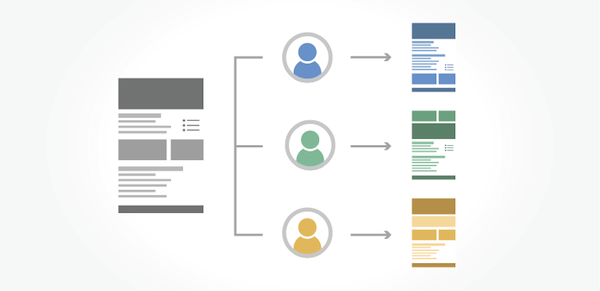From early forums to today’s immersive tools, web-based platforms have provided the flexibility to communicate with many people at once and to support communities for discussion and sharing.
edX was founded in 2012 as a learning initiative between Harvard University and the Massachusetts Institute of Technology, providing higher-education institutions with the opportunity to offer top-tier curriculums online and opening the world of university courseware to anyone with Internet access. Since then, edX has begun the process of creating an open source platform for creating, managing, and distributing online courseware on MOOC.org with Google as a technical partner.
When we consider the potential of an open source digital education framework that is accessible worldwide, MOOC.org is faced with an interesting problem of what it means to learn in the digital age. The collaboration not only represents a new way of looking at online education, but also innovates on blending learning models into formal school education.
MOOC: What is it? Where did it Come From? Where is it Going?
MOOC.org borrows its domain from the acronym MOOC (massive online open course), which refers to online courses that enable thousands of students at a time to experience course material and engage in conversation.
With millions of users worldwide, MOOC platforms address issues of accessibility and diversity in education across social and geographical divides by providing access to course materials online (courseware) that would otherwise be limited to a location-based campus experience, at often-prohibitive lifestyle and monitory costs.
Today’s online education platforms are not the first to facilitate conversation alongside content. YouTube, for example, created one of the first places for video and conversation, allowing anyone to view content and contribute contextually. Many content creators structure material sequentially, creating dialog with their viewers, and the integration of a variety of media and methods to absorb information helped video-based learning platforms rise to the challenge of providing customized experiences within a single learning model. Video content is a great way to translate a traditional lesson into a digital form, however, new environments for learning and online access to information offer the opportunity to take a fresh approach. edX takes a step in this direction by integrating accessible and immersive tools with a conversational, lecture-based platform.
It is fair to question whether scale and platform jeopardize the principle of high quality, personalized, and fulfilling educational experiences. As a platform-dependent method of distribution, MOOCs are vehicles of mass consumption in which individuals much reach to connect with courseware on a personal level. Offering a responsive platform that can fit a user’s unique behaviors in an online environment can transform online learning from accessing a bank of information to offering meaningful interactions.
An Experience that is More than the Sum of its Parts
MOOC platforms continue to change and improve as new technologies, information visualization and usability practices become standard. MOOC.org now has the challenge of integrating digital learning solutions with in-class methods—a problem of combining two learning models into one that is both standardized and flexible and has relevance on a global scale.
Google is the leader in organizing and making meaning of vast amounts of data and sets standards that define digital literacy. As a giant of service providers, it has the drive to help create a robust learning platform by drawing on the entirety of its web reach and collective data to assess individual learning, browsing, and searching patterns, and can tailor a customized experience. Additionally, assistive technologies such as text-to-speech (TTS) and alternative navigation controls for those with limited motor abilities can be integrated directly into the learning platform, making the digital classroom inclusive and accessible.
Acknowledging Digital Literacy and Setting the Stage for Blended Learning
“Blended learning” is a hybrid of digital and physical learning methods, and has become a norm in formal education and everyday interactions. How often do we reach for our phones to find out something about the world around us? As approaches to education shift, students are relying more on the Internet, not only for information for coursework, but for their social communication, cultural knowledge, and modes of expression. All of these interactions influence the way each student approaches the educational environment, which is largely at odds with its online counterpart.
Forcing a digital experience on top of a classroom setting is a misguided effort
Forcing a digital experience on top of a classroom setting is a misguided effort. Making a big leap in the interaction and organization of information can be destructive to the educational process if it becomes disjointed. Working with the advantages of a classroom, as well as acknowledging the technological savvy that students are coming in with, requires structuring a curriculum in its digital and physical forms to facilitate conversation, globalization, and making connections with information through interactive experiences. Augmented reality, for example, can be used to lead to interactive content from traditional media, not only maintaining the benefits of the physical learning environment but complementing them with an enriching digital environment where a second conversation can take place.
[google_ad:WITHINARTICLE_1_234X60_ALL]
Making Meaning from Individual Behavior, Post-Quantification
If Google has shown us anything, it is the power of meaningful analytics. Being able to parse through piles of “big data” and emerge with findings that affect the way information is presented and absorbed is a powerful asset. An individual’s search behavior, for example, can affect the results that are shown in the future. Bringing a similar approach to assessing patterns in user behavior across the web with learning platforms is the key differentiator and opens the door to truly transformative change in personalizing education. Identifying quantifiable and meaningful methods of measuring engagement can help an online platform be more than an exploration of material. By being responsive to a user’s behavior, elements in curriculum, material, and engagement patterns can be adjusted to integrate with both a classroom environment and an individual’s strengths and weaknesses.
On a basic level, an understanding of browsing patters online can help customize information, but as technologies offer more and more quantitative measurements for qualitative behaviors, meaningful structural changes and actionable feedback can be made. Facial recognition programs, like EngageSense developed by Sensorstar Labs, can begin to measure engagement alongside behavior on the platform, and adjust the presentation of information to help keep engagement high. Making personalized adjustments to digital learning materials in conjunction with an immersive classroom environment is the goal of a successful blended learning model.
Conclusion
Together, edX and Google are poised to set the global standard for accessible teaching and enriching learning platforms. Powerful experiences that function online as well as transition into the classroom environment offer the opportunity to think critically at the role of technology in education at all levels, and to open doors to conversation and collaborative learning across the world.








